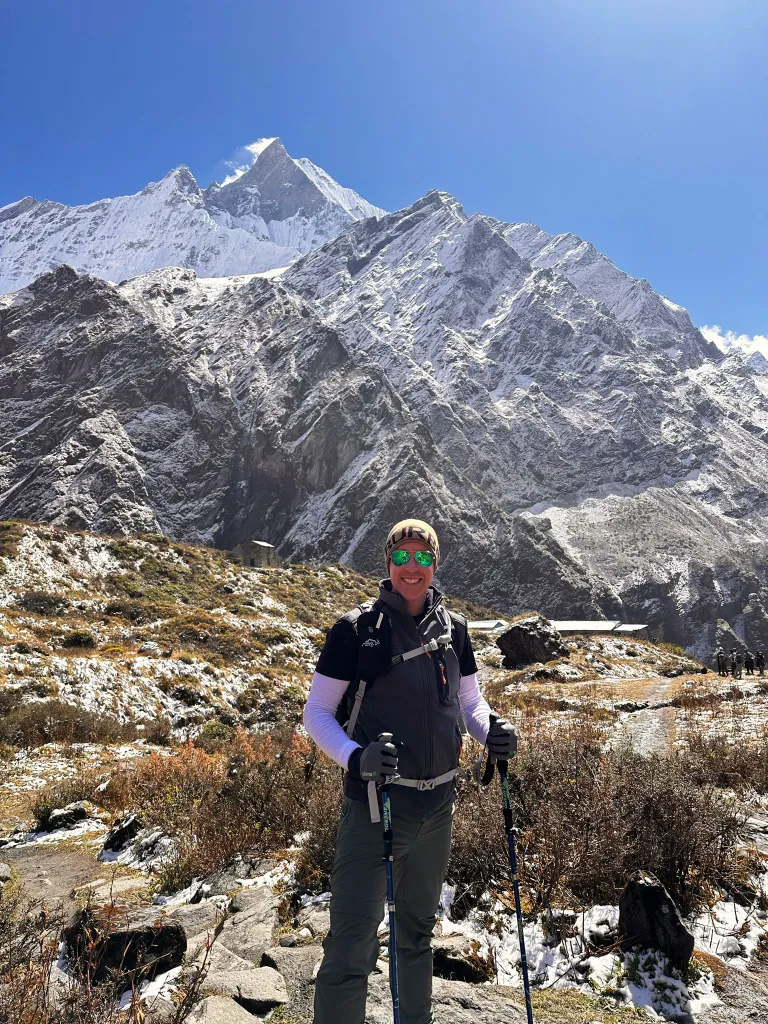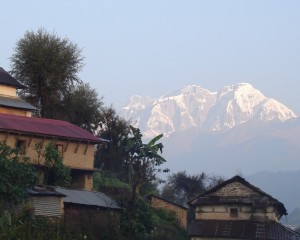How Hard is Mera Peak Climb?
Mera Peak is the highest trekking peak that gives the blend of exhilarating adventure. However, many of you are wondering if you can climb these peaks that test both your physical endurance and mental resilience.
Well, of course you can. It is one of the highest trekking peaks with very less technical difficulties as compared to other climbing peaks. But there is a catch as you require a good level of fitness to conquer these majestic peaks.
How about we spill all the tea and clarify all your doubts regarding the difficulty of Manaslu Peak.
Overview of Mera Peak Climbing
Mera Peak is one of the towering trekking peaks at 6,461 meters, known for its breathtaking Himalayan views of Peak 41, Tangtse, Kantega, Everest, Kanchenjunga, Baruntse, and many more. The climb consists of three main summits: Mera North, Mera Central, and Mera South.
The 15-day climb offers a magical adventure through the less explored region of the Sagarmatha zone and the alluring Sherpa culture.
Often claimed as the highest trekking peak, the route covers Kathmandu, Lukla, and key stops like Chutanga, Zatra La, Thuli Kharka, Kothe, Thangnag, Khare, Mera Base Camp, and Mera High Camp. Additionally, the climbing also gives you the experience of exploring the gem less crowded areas as compared to Everest.
Climbers need permits such as the Mera Peak Climbing Permit, Khumbu Rural Municipality Entrance Permit, and Makalu Barun National Park Entry Permit.

Is Mera Peak Climb Difficult ?
The climb to Mera Peak is considered less challenging but within reach for both novice trekkers and experienced trekkers with good physical fitness. The best part about the peak is that you should not cross the icy ridges and glaciers.
However, you have to walk and gain altitude that can make it challenging. The significant gain in altitudes can often cause altitude sickness.
Climbers must be well-prepared physically, with good cardiovascular and muscular fitness, and mentally resilient to cope with the rigors of high-altitude trekking. Proper acclimatization is crucial, as the route includes significant altitude gains. Additionally, you should know how to use equipment such as crampons, ice axes, and ropes is necessary
Factors that increases the Mera Peak Climb Difficulty
- High Altitude: Mera Peak stands at 6,461 meters (21,197 ft), requiring climbers to acclimatize properly to cope with reduced oxygen levels at high elevations. Altitude sickness can still be a significant concern.
- Physical Endurance: Despite being less technical, the climb to Mera Peak Base Camp and the subsequent ascent demands strong physical fitness. Climbers face long trekking days and steep ascents, which can be physically demanding.
- Weather Conditions: The Himalayan weather is unpredictable, with sudden changes in temperature, wind, and snowfall. Weather conditions can affect visibility, trail conditions, and overall safety during the climb.
- Logistical Challenges: Organizing permits (Mera Peak Climbing Permit, Khumbu Rural Municipality Entrance Permit, Makalu Barun National Park Entry Permit), arranging transportation to Lukla, and coordinating logistics with guides and support staff require careful planning.
- Route Navigation: While less technical in terms of technical climbing skills, navigating the route to Mera Peak involves following established trails, identifying key waypoints (such as Lukla, Chutanga, Zatra La pass, Thuli Kharka, etc.), and understanding the terrain to ensure a successful ascent.

Tips to Make Mera Peak Climb Successful
- Physical Fitness: Prioritize physical fitness with cardio exercises, strength training, and endurance workouts. Focus on building stamina and muscular endurance to deal with long trekking days and the altitude.
- Acclimatization: Plan your itinerary with adequate acclimatization days to gradually adapt to higher altitudes. It reduces the risk of altitude sickness and improves your chances of a successful summit.
- Gear and Equipment: Ensure you have appropriate gear, including quality trekking boots, warm clothing layers, down jacket, sleeping bag rated for cold temperatures, and essential climbing gear like crampons, ice axe, and helmet.
- Hydration and Nutrition: Stay well-hydrated throughout the climb to combat the effects of altitude. Carry a water purification system or tablets to treat water from natural sources. Consume balanced meals rich in carbohydrates, proteins, and to fuel your body for the trek.
- Weather Awareness: Be prepared for unpredictable Himalayan weather by packing waterproof and windproof layers, gloves, and a hat. Monitor weather forecasts and be flexible with your schedule to wait out storms if necessary.
To wrap it up, Climbing Mera Peak is not just about conquering heights but embracing a journey that challenges and inspires. The ascent to 6,461 meters rewards climbers with unparalleled views of Nepal's towering peak. Each step up this trekking peak shows your determination and resilience to echoing the spirit of exploration. Let Nepal Vision Treks guide you through this unforgettable journey in the heart of the Himalayas.

FAQS






